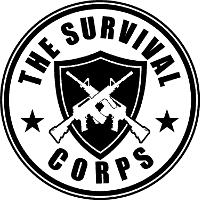Ill prepared preppers place both themselves and those who rely on them in harm’s way. An organized checklist, which covers all equipment and assigned responsibilities, will maximize your odds of survival. We’ve put together one of the most in depth, comprehensive lists available. The prepper’s ultimate survival gear checklist hits the mark!
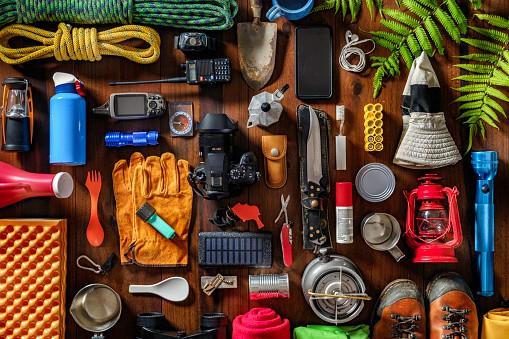
What is a Prepper Checklist?
A comprehensive prepper checklist serves two functions. First, it acts as a shopping list of items that need to be bought and properly stored. Second, it serves as a todo list, covering all the tasks that need to be completed for full preparation.
Remember, a prepper’s checklist is always evolving. Your preparedness plan will change as your knowledge and skills development. This particular template is specific enough to cater to the individual needs of each prepper while still accomplishing general goals.
The list is broken up into general categories and each category is broken up into two consecutive subsections, aimed at new and advanced preppers respectively in a survival scenario.
The basic checklist comprises the minimum requirements for preparedness and should be worked through as quickly as possible. The advanced checklist, when implemented, allows for survival over longer periods and/or increases the capacity of your prepper group.
1. Off-Grid Energy Options
Basic Checklist
- Ability to recharge NiMH or NiCd batteries from an indefinite power source, in the sizes you use (AAA, AA, C, D, 9V).
- Generator with enough capacity to power critical needs for 14+ days (freezer, refrigerator, needed electronics, etc.).
- Store of fuel to power generator for 14+ days.
- Put uninterruptible power supplies on all computers and other sensitive critical electronic equipment
- Spare extension cords.
- Battery maintenance kit.
Advanced Checklist
- Solar power, or other renewable/long term power. Your setup should be capable of running all critical devices for an indefinite period, able to power the entire household when at full capacity.
- Ice mold or machine.
- Spare parts for renewable energy equipment upkeep (fuses, wire, connectors, inverter parts, etc.).
2. Apparel
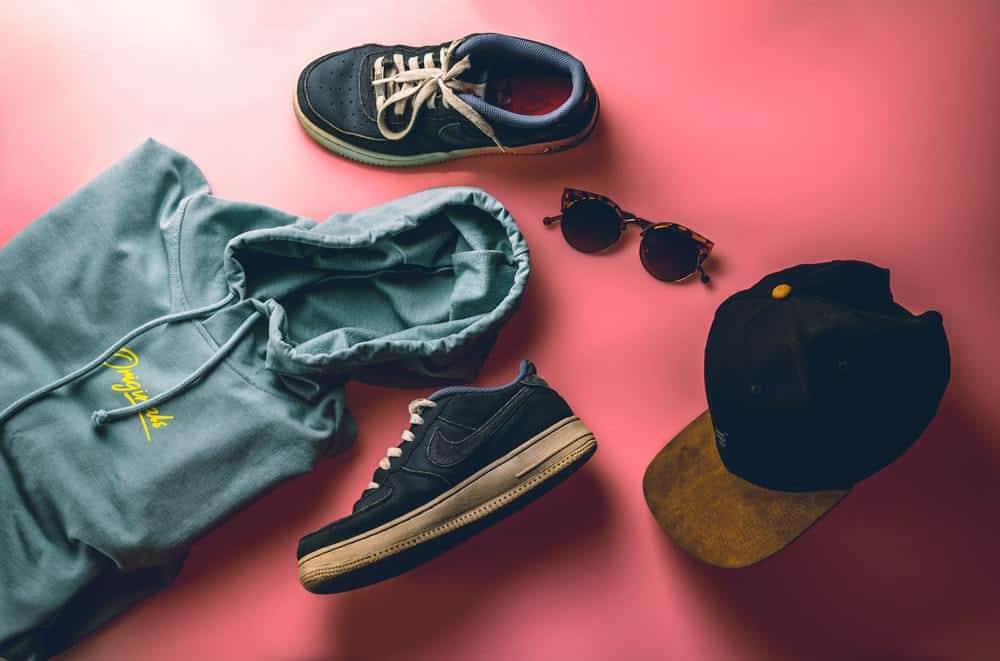
Basic Checklist
- Three complete changes of rugged clothes for all members.
- Three complete changes of sleep clothes for all members.
- Seven changes of underclothes for each member.
- One pair of rugged, waterproof boots for each member.
- One pair of comfortable shoes (sneakers, sandals, etc.) for each member.
- Outer gear (boots, gloves, mittens, scarves, hats, etc) for all climates (cold weather, rain, etc.).
- Spare shoes & boot laces.
Advanced Checklist
- Seven sets of rugged clothes for each member.
- Fourteen changes of underclothes for each member.
- Spare boots (rugged and waterproof).
- Spare comfort shoes.
- Kit for making/repairing clothes.
- Kit for making/repairing boots and shoes.
- A sizable quantity of various materials for the repair and creation of clothing.
- Second (spare) set of outer gear for all climates
3. Communications
Basic Checklist
- Tactical communications (0 – 5 miles), generally a walkie talkie (FRS, GMRS, Ham, CB, etc.), transmitter and receiver, and extra batteries (see also alternate energy).
- Shortwave radio with SSB capability, for generally keeping up to date with world events.
- Basic computer with access to the internet and capacity to view files (.doc. .pdf. .html. etc.). It should be obvious that an Internet connection goes along with this.
- AM/FM radio, battery operated (television is optional, but might be worthwhile if you are close to a TV broadcast tower that can run on emergency power).
- Plans and equipment for making expedient antennas.
- Radio and computer manuals and backup discs.
- If you have a cell phone, you’ll need a 12VDC charging cord for it and a spare battery.
- Pocket list of contact numbers for family, friends, and team members.
- Long-distance phone calling card that doesn’t expire.
- Pocket list of frequencies.
- USB drive containing pocket computer system (OS, files, programs, PGP, etc.).
- USB drive containing your data files.
- Door intercom for communicating with people outside while staying safe inside.
Advanced Checklist
- Short distance communications (up to 50 miles) (usually a mobile ham VHF/UHF radio and a vehicle or yagi antenna), transmitter, and receiver.
- Packet radio for short-distance digital communications (can be particularly useful for local groups/teams/family units).
- Long-distance communications (greater than 50 miles), usually ham HF, transmitter, and receiver.
- Ham radio email, like Wave mail or Winlink/Netlink over HF and possibly VHF (Packet).
- Satellite phone.
Notes: Always store your electronics in Faraday Cages when not in use.
4. Defense (Safety and Security)
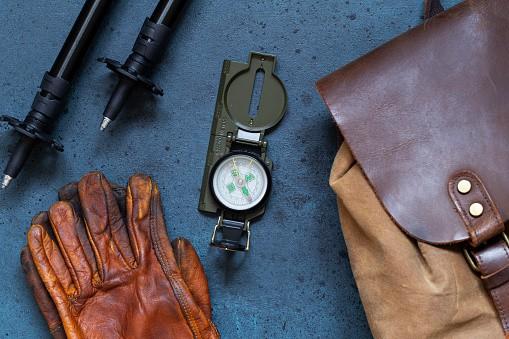
Basic Checklist
- A security system that monitors home inside perimeter
- Monitoring system to be alerted when someone has breached key areas of your property.
- Outside floodlights are connected to motion sensors covering the outside perimeter of the home and any other key areas.
- Fire extinguisher and pepper spray.
- Basic defensive firearms so that every able person can defend the home.
- Adequate ammunition supply.
- Holsters for handguns, slings for rifles; cases for all firearms.
- 500 rounds for every firearm that is in working condition (defensive ammunition).
- 500 rounds of training ammo for each firearm.
- Three magazines or 30 clips for every firearm that uses one.
- Cleaning gear for all firearms.
- Smoke & carbon monoxide detectors on all floors.
Advanced Checklist
- Camera surveillance around home covering all areas.
- Motion and seismic sensors monitor the perimeter and other key areas of the property.
- External fire suppression system.
- Spare parts for every firearm.
- Spare magazines and clips for every firearm that uses them (10 magazines and 300 clips, at your discretion).
- Spare cleaning gear for all firearms.
- 1000 rounds for every firearm (defensive ammunition).
- 1000 training rounds for each firearm.
- Reloading equipment and supplies for each of your main calibers.
- 5000 rounds for your main battle rifle.
- .22 LR training rifle and 10,000 rounds of good quality .22 LR ammunition.
- Laminate for exterior windows (resists breakins, etc.).
- Night Vision (mono or binocular).
Notes: You can’t have too many fire extinguishers. You need to be able to put out a fire quickly, especially if there is no fire department available.
Notes: Yes, it seems like a lot of ammunition, but every year our freedom erodes a little bit more. Better to have it and not need it, than to need it and not have it (that pretty much goes for everything on this CC list).
5. Financial Preparedness
Basic Checklist
- Cash on hand for one month of bills.
- Supply of hard currency (silver, gold, etc.).
Advanced Checklist
- Cash on hand for six months of bills.
- Supply of barter goods.
- Junk gold and silver and a proper understanding of their value.
- Method for determining the specific gravity of precious metals.
Notes: Keep hard currency at your discretion. Remember it may be worthless. Use gold to store larger amounts of wealth and silver for smaller amounts. Silver is also better in a barter environment.
6. Survival Medical Gear
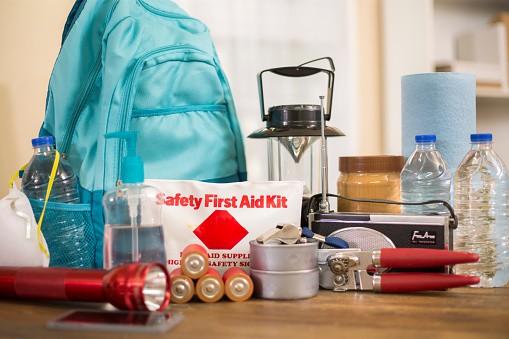
Basic Checklist
- Insect repellent.
- Blister pretreatment.
- CPR and first aid training.
- Ice & heat packs.
- 30 days of life-saving prescription medications.
- 30 days of OTC and “maintenance” medications.
- List of patient info for each person.
Advanced Checklist
- IV supplies. 3 liters of solution per person.
- Knowledge of blood types of all persons. Transfusion capability for each person.
- Dental care.
- Additional 90 days of life saving prescription medications.
- Additional 90 days of non-critical and “maintenance” medications.
- Advanced first aid training.
Notes: Warning on transfusions: you can kill people easily if you do this wrong. DO NOT perform any medical treatment that you are not trained for.
7. Food Storage And Cooking Off The Grid
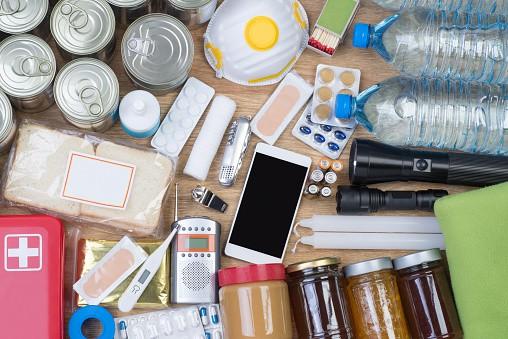
Basic Checklist
- Stored food for 30 days (minimum…work up to 90+ days) of food you eat every day (store what you eat, eat what you store).
- Portable capability for minimumprepared foods for 14 days (for traveling, shortterm missions, etc.).
- Disposable flatware for 30 days.
- Open cans and another packaging.
- Cookware that can be used over an open fire (pots, pans, kettles, etc.).
- Durable cooking utensils (including pots, pans, etc.).
- Equipment for cooking over a fire pit (grates, tripods, hooks, etc.).
- Recipes for making a variety of dishes from the food you store.
- Spices to make food more palatable, enjoyable, varied in survival situations.
Advanced Checklist
- One year’s worth of food.
- Portable capability for minimum prepared foods for 30 days or more (for traveling).
- Seeds and gardening equipment. Fertilizer.
- Livestock equipment.
- Preserving equipment.
- Cook food 3 times a day with alternate methods for 1 year or more
- Disposable flatware for 90 days (if a continuous supply of water is not obtained).
- Oils: make sure you have enough oil, lard, etc. on hand to cover the increase in pan cooking.
Notes: Minimumprepared foods are those that require little or no cooking before eating.
Flatware means plates, bowls, cups, spoons, forks, survival knife/kukri knives, napkins, etc. The idea of disposable flatware is to reduce consumption of water and is typically for shorter term events.
8. Disaster Preparedness Plans
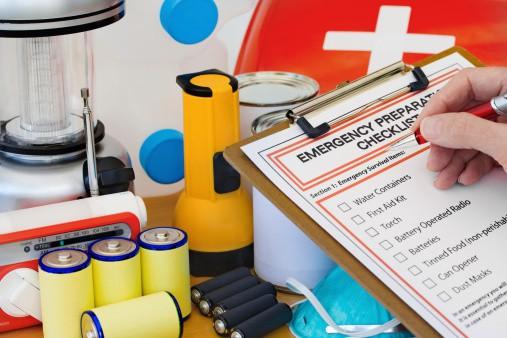
Basic Checklist
- Proper insurance.
- Documents with pictures and/or video of all possessions for insurance purposes, including the serial numbers for guns and electronics.
- All emergency service numbers are readily available (police, fire, ambulance, poison control, utility services). Non-emergency numbers for the same services as well as family, friends, neighbors, etc.
- List of important websites next to (or along with) the important phone numbers.
- Copies of personal information like birth certificates, SS cards, driver’s licenses, with current pictures, kept in a fire safe.
- Written plan.
- “Trigger Point” list that determines what plans need to be activated by event criteria.
- A list of “last minute purchase items” – in case you have time to “top off”.
- Current inventory.
- Resource materials (books, CDs, etc.) cover a wide range of topics.
- Instruction and repair manuals for everything.
- Backups of all important computer files.
- Hard copies (printouts) of all critical information contained in computer files.
- Forms of entertainment (games, books, music, DVDs, CDs, MP3 players drawing, coloring, cards, football, frisbee, baseball/throwing ball, soccer ball, etc.).
Advanced Checklist
- Maps of the surrounding area with extensive notes, including conditions at different times of the year.
- “Range cards” for your entire property.
- Defense plan for the entire property.
- Triple backups of everything that’s important.
- Personal Items.
- Purse.
- Wallet.
- ID.
- Watch.
- Money.
- Daily carry items.
Notes:
A “last minute checklist” is generally a bad thing to have to implement. It’s better to have all the equipment and Supplies on hand before an event occurs. You will need to stockpile survival gear for your basic survival kit.
A “Trigger Point” is an event that you have predetermined that will cause you to enact certain parts of your plan. For example, when virulent H5N1 reaches Canada or Mexico, your plan calls for you to do _______ (whatever that might be)
9. Lighting

Basic Checklist
- Instant on light for each member (a decently bright flashlight that doesn’t burn through batteries, like an LED light).
- Area light (prefer safe LED or fluorescent[ light).
- Spotlight, handheld, battery-powered.
Advanced Checklist
- Spare parts for all lights (bulbs, etc.)
Notes: LED lights are preferred due to their lower consumption of battery power.
10. Navigation And Signaling
Basic Checklist
- Maps of the surrounding area, including topo, road atlas, etc.
- Compass.
- Protractors, rulers, grid squares, alcoholerase markers, pencils, grease pencils, etc. for map use.
- Waterproof map cases.
Advanced Checklist
- GPS with built-in mapping software and directory of information (coordinates, descriptions, etc), pre-loaded with the appropriate maps.
- Power support for GPS.
11. Prepping for Pandemics, Nuclear + Bio-Terror Attacks
Basic Checklist
- N100 or P100 masks/filters.
- Tyvek suits, including hood and over boots.
- Nitrile gloves.
- Air filtration system capable of providing positive pressure in a safe room area, with spare filters.
- EMP surge protectors on all sensitive equipment.
- Decontamination gear and supplies.
- 6 mil plastic in rolls and metal tape for safe rooms plus backup materials.
- Potassium Iodine (KI) tablets, enough for a minimum of 14 days for each person.
- Logbook for noting exposures and readings, pencils, pens, calculator, ruler, loglog paper.
- Radio-logical instruction manual (like “Fallout Survival” by Druce D. Clayton; FEMA).
Advanced Checklist
- Air filtration system capable of providing positive pressure to the whole house, with spare filters.
- EMP surge protectors on all house outlets.
- Radiation meters (survey and dosimeters).
- Fallout shelter.
Notes: Air filtration system filters needs to be at least HEPA and possibly ULPA. Do not expect to stay in any room that has been sealed up with plastic for more than a few hours unless you are providing filtered air into the room. These survival tools are essential along with camping gear in wilderness survival situation.
12. Pets And Animals

Basic Checklist
- 30 days of stored food and water for each pet.
- Ability to handle pet waste if pet cannot go outside for 30 days.
- Pet care needs, special medications, toys, etc for 30 days.
- Leashes and kennels for each animal.
- Tie-down stake.
- Pest control for pets.
- Shot/vet record.
- Up to date shots.
Advanced Checklist
- 90 or more days of stored food and water for each pet, eventually working towards an indefinite supply for all pets.
- Ability to handle pet waste if the pet cannot go outside for 90+ days.
- Pet care needs, special medications, toys, etc for 90+ days.
- Pet first aid kit
- Tested recipes for pet food from stored and/or gathered food sources, food scraps, etc.
Also Read: 15 Tips for Camping in the Rain
13. Shelter, Fire, And Warmth
Basic Checklist
- Tent(s). Enough tent space to contain all members and gear.
- Tarps.
- Sleeping bag or other bedding of choice for each member, capable of keeping people warm in sub-freezing temperatures and to maintaining body heat.
- Spare sheets and blankets to set in just a few minutes.
- Pillows (as needed).
Advanced Checklist
- Alternate heating source for the home.
- Land mobile – more durable and mobile sheltering system (e.g., camping trailer).
- Shelter building tool.
- Shelter repair supplies: plywood, wood strips, plastic sheeting, screws, nails, etc.
- Pre-cut plywood for covering windows if you are in a hurricane area.
14. Tools, Repair, And Utility
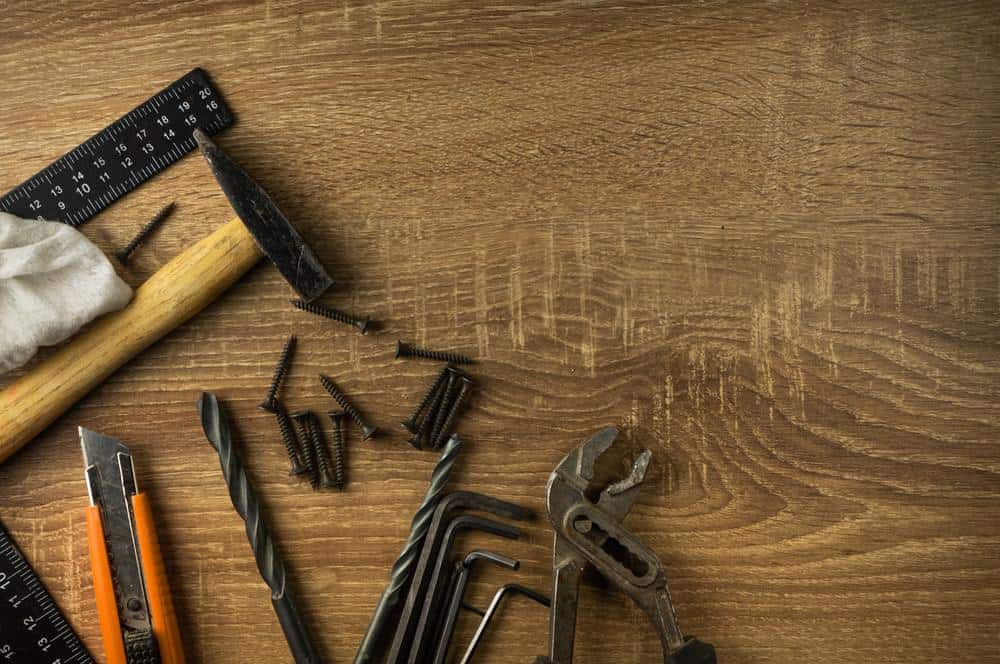
Basic Checklist
- Buckets, with and without lids.
- Basic socket set.
- Basic screwdriver set.
- Basic wrench set.
- A basic set of saws (wood, metal, etc.).
- A basic set of files.
- Basic wrench set.
- Multimeter.
- Tarp and plastic sheeting for temporary repair of roof, windows, and siding from storm damage. Largehead nails and wood strips to attach them.
- Multitool, quality construction.
- Hammers.
- Shovels as survival tool
- Pickaxe.
- Axe.
- Hatchet.
- Rope.
- Wire (bailing and electrical).
- Twine.
- Fuses.
- Crimp connectors.
- Scissors (need several pairs for different tasks; a good set of scissors is indispensable).
- Soldering iron.
- Solder.
- Drill and drill bits.
- Measuring tool (tape measure, carpenter’s rule, etc.).
- Sewing kit.
- Clothespins, wooden.
- Eyeglass repair kit.
Advanced Checklist
- Supply of nails, screws, and some lumber for structural repair of house
- Parts & tools to repair critical plumbing items
- Welding setup
Notes: Some of the items above in survival kits may require the use of electrical power.
Also Read: How to Organize Survival Gear & Supplies
15. Transportation
Basic Checklist
- All vehicles are in good repair.
- Four-wheel drive on the main vehicle or traction enhanced (locking differentials, etc.).
- Stored fuel for one full tank (e.g., if your vehicle’s tank holds 20 gallons, store 20 gallons) in man-portable containers.
- Self-vulcanizing plug kit.
- Air compressor (12 VDC).
- Hose clamps, various sizes (or hose wrap or duct tape).
- Siphon hose.
- Spare tire.
- Emergency road equipment (flares, warning reflectors, etc.).
- Basic spare parts (hoses, belts, sparks plugs, fasteners, etc.).
- Extra fluids (oil, coolant, transmission fluid, washer fluid, etc.).
- Tool kit, stored in the vehicle.
- Fire extinguisher.
- Jumper cables.
- Recovery strap/tow rope.
Advanced Checklist
- Extended fuel storage.
- Additional spare parts for vehicle
16. Water
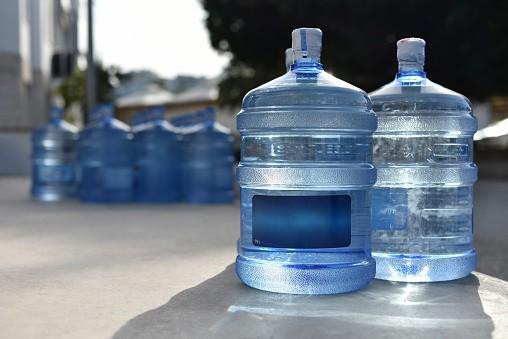
Basic Checklist
- Stored water for 30 days.
- Dedicated “dirty water ” containers* equal to about 30 gallons, plus additional containers to catch rainwater.
- Spigot controlled water (on / off valve).
- Portable capability to pre-filter / purify/disinfect water for additional 30 days or more
Advanced Checklist
- Stored water for 90 days or more.
- Backup ability to (conveniently) transfer water out of bulk containers.
- Dedicated “dirty water” containers* 100 gallons or more.
- Water purification tablets (such as grapefruit seed extract or iodine)
- Pressurize lines to feed water to one or more locations.
- Well, water system with alternative energy to keep it running.
Notes: Quantities listed are per person. A dedicated “dirty water” container is what you use to collect and store raw water before you purify and/or disinfect it. They should always be kept separate from “clean water” containers.
17. Weather Information
Basic Checklist
- NOAA weather radio.
- Basic understanding of clouds, weather systems, and storms typical in your area.
- Weather reference book or poster.
- Thorough understanding of weather-related alerts, watches, and warnings.
Advanced Checklist
- Handheld weather measurement instruments.
- Powered weather monitoring station.
- SKYWARN training.
Conclusion
This article has given you a broad overview of what makes up the best survival kit. It’s important to note that each person will have specific needs and different ideas about the ideal items for their personal kit.
With this in mind, it is always wise to consult with someone who knows your particular situation before making any purchases or investments. If you have any questions related to emergency preparedness, don’t hesitate to contact us today!
